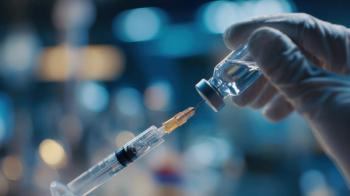
Study: Medicare Patients to Benefit from $35 Insulin Cap
The Inflation Reduction Act’s cap on out-of-pocket costs for insulin is likely to improve outcomes for almost half of Medicare’s insulin users.
The $35 per month cap on insulin that has been imposed by the Inflation Reduction Act may improve prescription satisfaction, adherence, and affordability among patients, according to a
“The insulin out-of-pocket cap may improve patient outcomes for half of the Medicare-insured insulin users,” one of the authors, Kevin Lu, Ph.D., told Formulary Watch. “Attention should be paid to gender and racial/ethnic minorities, and incentives may be considered to encourage the utilization of lower-priced insulin.” Lu is an associate professor in the department of Clinical Pharmacy and Outcomes Sciences at the University of South Carolina, Columbia.
Lu and his colleagues reviewed deidentified data from January 1, 2006, to December 31, 2019, from the Medicare Current Beneficiary Survey (MCBS), a
“We are interested in who is likely to benefit from the $35 insulin out-of-pocket cap defined in the IRA and the estimated effects of this cap on essential patient outcomes in diverse groups,” Lu said.
In this survey, of the 3.1 million insulin users in this survey, 1.4 million (45.1%) had insulin out-of-pocket costs of $35 or more per month in 2019. Investigators, led by Minghui Li, Ph.D., in the department of Clinical Pharmacy and Translational Science, University of Tennessee Health Science Center in Memphis, found that having insulin out-of-pocket costs of $35 or more per month was associated with an 83.2% lower likelihood of prescription satisfaction, a 61.3% lower likelihood of prescription adherence, and a 49.7% lower likelihood of prescription affordability.
But they also found that some populations, such as racial and ethnic minorities and women, are less likely to be eligible for the insulin cap.
However, researchers from this study also suggest that ca ap on out-of-pocket costs provides no incentive for using lower-priced insulins. “This lack of incentive will likely lead to higher total insulin expenditures, from a societal perspective,” they wrote. “Policy makers may consider strategies (eg, encouraging use of biosimilar insulin) to control future insulin costs. Attention should also be paid to expensive medications other than insulin, because patients with diabetes are increasingly being treated with these drugs.”
A limitation is that this study may be subject to proxy response bias when participants are not available or unable to respond.
Newsletter
Get the latest industry news, event updates, and more from Managed healthcare Executive.






















































